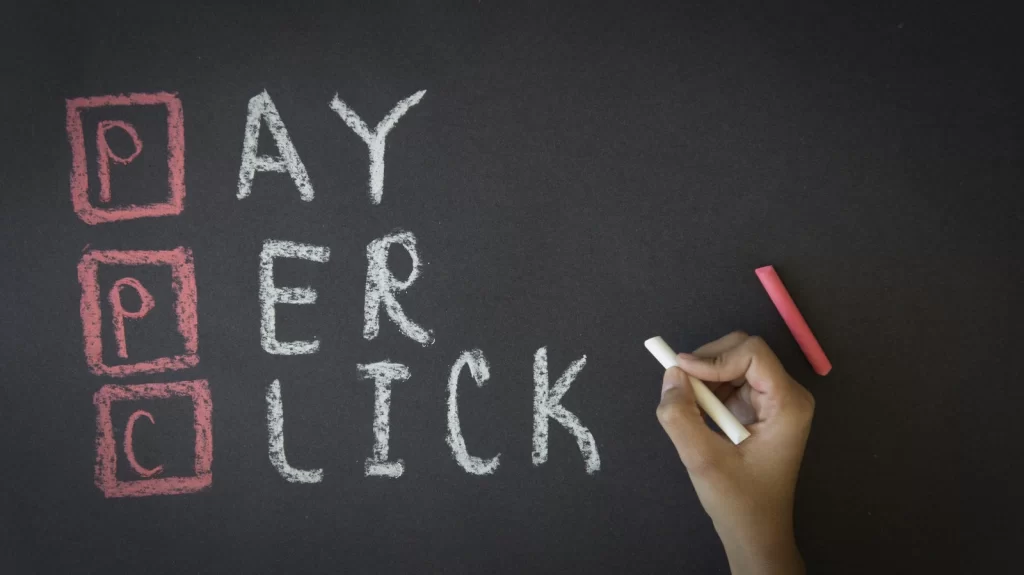Why You Need a Brilliant Landing Page for PPC Success
Introduction 🛬
The landing page is an online marketer’s stage, it’s where the magic of conversion happens! If you’re responsible for PPC (‘Pay Per Click’) advertising, a landing page is not just ‘nice to have’ – it’s an essential. Having a landing page for PPC is such an important element when marketing your business online, so much so that it could be the most significant factor in determining the success or failure of your campaign. “What makes it so crucial?”, I hear you ask. Pour yourself something cool to drink, get comfortable and let us explain the reasons why creating a great landing page for your PPC campaign can be a first class ticket to success.
Part I: A Grand Entrance – First Impressions Matter 🕺
Relevance is the Key
If someone clicks on your advertisement, they expect to find what they’re looking for. In the event that your page doesn’t meet their expectations, you’ll be losing a potential customer and squandering your marketing investment. It’s akin to inviting people to a rave and then playing classical music. This isn’t the type of concert that they’ve signed up for!
Visual Uniformity
Consistency of the design elements such as colours, fonts and logos, among the advertisement and the web page is essential. It allows the user to feel comfortable that they’re in the right spot, and also creates an effortless transition between clicking and conversion.
Speed
In today’s fast-paced, constantly changing globalised world – speed and efficiency is of vital importance. A slow loading website can result in a loss of conversion. According to Google, as page load time goes from one to three seconds, the probability of bounce increases by 32%. So, make sure your landing page is as rapid as a Cheetah chasing its prey if you want to convert those clicks!
User Experience: The Unsung Hero
A well-designed and user-friendly landing page can dramatically improve the experience for the user and increase the likelihood for visitors to convert. Think of it as rolling out the red carpet for your customers. No one wants, or expects, a confusing and frustrating web experience in this day and age – exploring your landing page shouldn’t be a pain – it should be a pleasure.
Part II: The Conversion Playground – Landing Page for PPC – Where Potential is Fulfilled 🛝
“Call-to-Action” – The Golden Ticket
A clear and concise call-to-action (CTA) is perhaps the most important component of a well-designed and optimised landing page. It should be hard to miss and simple to understand. Whether it’s a ‘Buy Now’ button or a subscribe form – the CTA is essential to the success of conversion. The customer understands what you’re offering, they want a piece of it – now don’t leave them hanging and risk losing their interest – an easy to find CTA points them to exactly what they want and how to get it. You’ve cultivated interest – the CTA harvests it.
The Art of Persuasion
To persuade visitors to make an informed decision, you’ll require appealing content. It can take the form of convincing text, captivating videos, or appealing images. It is important to emphasise the advantages and not just the qualities. Inform potential clients why your product or service can solve their issues or enhance their lives.
The Psychology Behind Colour
The colour you select to your page’s landing pages can significantly impact conversions. For instance, red is typically associated with urgency, whereas blue can be a sign of confidence. Pick colours that represent the mood you hope to instil in your guests.
Urgency and Scarcity: The Double Whammy
Utilising the factors of shortage (limited stocks) or urgency (limited time) can encourage customers to take action quickly. This is like a shopkeeper telling customers “Hurry, there’s limited stock and it’s going fast”.

Part III: The Storyteller – Cohesive Communication 📖
The Influence of Headlines
The headline is often the first thing that people are exposed to. It should be appealing in its relevance to the message that brought visitors to the site. A well-written headline could be the difference between bounce and conversion.
Subheadings and Bullet Points
Subheadings and bullet points allow the text to be more easily read, and help the user understand quicker just what it is you’re trying to tell them. You can also draw further attention to the most important elements, making your message more readable.
The Function of Storytelling
People love stories. Incorporating storytelling elements into your landing page will boost the number of people who engage. Whether it’s a tale of the client’s accomplishment or the process that led your product to its current state, it will help your landing page be more memorable and easily recognisable.
The Importance of Flow
Your landing page should guide visitors through a journey, leading them naturally from the headline to the CTA. Each element should serve a purpose and contribute to a cohesive, persuasive narrative.
Part IV: Data Mining – Gathering Insights ⛏️
A/B Testing – The Scientific Approach
A/B testing lets you try two different versions of a landing page to find out which is the most effective. This allows you to tweak elements like titles, CTAs and images, so that you can ensure you’re getting the best price for your dollar.
Analytics – The Numbers Game
Analytics tools like ‘Google Analytics’ can provide you with valuable information about the behaviour of your visitors. You can monitor certain metrics, such as the time spent on a page, as well as conversion rates and bounce rate to thoroughly understand how your website is performing.
Heatmaps – Visual Insights
Heatmaps show the areas where users click, scroll and spend their time on your page. This visual data will allow you to determine which elements are attracting attention, and which areas might need improvements.
Conversion Rate Optimisation – An On-going Process
CRO is not a one-time task, but rather something that happens continuously. Constantly re-evaluating and modifying your landing pages in accordance with user driven data will lead to continuous improvements and improved conversion rates.

Part V: The Trust Builder – Credibility and Assurance 🤝
Social Proof – The Crowd Effect
The influence of the public is undisputed. When we see people who endorse an item or service it’s more likely that we’ll be able to trust it. It’s a digital version of the standing ovation in the theatre.
Social Proof in Different Forms
- Client Testimonials: These are honest statements from happy customers. They are more precise and are regarding the way your service or product has helped them the more valuable.
- Star Ratings: An easy but effective method of social evidence. A star rating that is high can immediately boost your product’s popularity.
- The Case Study: This is detailed descriptions of the way in which your service or product was able to solve an issue for a particular customer. They’re especially effective for B2B companies.
- User-generated Content: This could include anything from photos of customers to tweets that praise your product. Social evidence in its most organic form.
How to Show Social Evidence:
The location and social proof you have could have a major impact. It should be visible but not overly intrusive. Many websites have it close to the Call-to Action to give that final push towards conversion.
Trust Badges – The Seal of Approval
Trust badges function as security guards for the web world. They assure users that your website is secure and reliable.
Different Types of Trust Badges
- SSL Certificates: Ensure that your site is secure by changing the HTTP of your URL into HTTPS and showing an icon for a padlock within the browser.
- Payment Security Badges: These badges assure the customer that their personal information regarding financial transactions is secure. Some examples are VeriSign along with PayPal badges.
- Industry Endorsements: If your company is a member of an established industry group showing their logo will increase your reputation.
- Money-Back Guarantees: These assure clients that you will be able return their money If they’re not happy with their purchase.
Where to Place the Trust Badges
Trust badges must be placed in a place in a place where they can be easily seen – however, they shouldn’t be distracting. They are often placed close to an online payment processor, within the footer of the website or right next to the CTA.
Guarantees – A Safety Net
A guarantee is similar to giving your customers a security net, making it easier for users to take the plunge and convert.
Different types of guarantees
- Money-Back Guarantee: This is the most straightforward type. If a customer is not happy, they get their money back.
- Satisfaction Warranty: This is broader and can include refunds, replacements or other deals to ensure that the customer is satisfied.
- The Lowest Price Promise: It ensures the customers that they’re getting the best possible deal.
Making a Convincing Guarantee
The language you choose to use in your guarantee could make an enormous difference. It must be concise, precise, specific, and easy to comprehend. Make sure you place it prominently, but elegantly on your web page’s homepage.
FAQs: Addressing Concerns
A well-crafted FAQ section can act as a salesperson that anticipates the needs and concerns of customers.
What Should Be Included in FAQs?
- Payment Information: Details on accepted payment methods, security measures, etc.
- Product Details: Answers to the most frequently asked questions regarding the product’s features as well as its usage and benefits.
- Shipments and Returns: Information about ways to ship, shipping costs as well as return policies.
- Contact Customer Service: What can customers contact Customer Support should they have additional concerns.
The Art of FAQ Placement
The FAQ section must be accessible directly on the landing page or through a clearly-marked hyperlink. Some websites prefer an accordion or collapsible section to make sure the page is not cluttered.
When you carefully craft each of these trust-building factors You’re not just ensuring prospective customers that you’re trustworthy; you’re also increasing the chance of converting them. Trust isn’t just a nice thing to have on the internet – it’s a necessity!

Part VI: The SEO Bonus – Organic Visibility 🌾
Keywords for Building Blocks
Including keywords not only helps a landing page for PPC but also improves the chances of it ranking organically. They’re the ones that are most sought-after in those who work in PPC and SEO. These are words your visitors can input into search engines for an answer to their questions or an answer to their inquiries. By incorporating relevant keywords in your landing page’s text is like creating road signs that drive the users to your website.
The Importance of Keyword Research
Before you sprinkle keywords across your landing page like fairy dust, you must determine which ones will work their magic. This is the job of keyword research. Tools like Google Keyword Planner as well as SEMrush can help you identify the most well-known low-volume keywords relevant to your product or service.
Long-Tail Keywords: Your Secret Weapon
While high-volume keywords can drive higher traffic, keywords with a longer tail tend to be more likely to be converted. They’re longer and include specific terms that consumers tend to look for when making a purchase decision. For instance, instead of “running shoes” an extended search term might be “best cushioned running shoes for flat feet”.
Keyword Placement: Location, Location, Location
Once you’ve identified your most important phrases, the following step will be to incorporate these words naturally into the contents on your page. This includes the headline, subheadings, body text, and even image alt tags. However, it is important to note that just stuffing keywords into your text indiscriminately is not advised – your content should be written in a natural manner and provide value for the reader.
Meta Descriptions – Hidden Gems
Meta descriptions are like the blurb that appears on the back cover of a book. They provide a short description of the future. While they don’t directly impact the position of your website in search results – a well-written meta description will dramatically increase click-through rates for organic search.
Creating the Perfect Meta Description
A compelling meta description should be concise, informative and include a call to take action. It should also include your target keyword, as search engines frequently highlight these in search results.
The Role of Meta Descriptions in PPC
In PPC campaigns, your ad’s description serves a similar purpose to that of the ad itself. It should draw attention and provide information to attract clicks. Crafting a great meta description can serve as practice for writing effective PPC advertisements and descriptions.
Backlinks – The Cherry on Top
Backlinks, or inbound links from other websites, are like votes of confidence in your content. They tell search engines that your landing page offers value, thereby improving its organic ranking.
The Quality Over Quantity Rule
Not all backlinks are created equal. A few high-quality backlinks from reputable websites can do more for your ranking than dozens from low-quality sites. So focus on earning backlinks from authoritative sources in your industry.
How to Earn Backlinks
One of the most effective ways to earn backlinks is by creating valuable, shareable content. This could be a blog post, an infographic, or a video that offers useful information or solves a common problem. You can also reach out to industry influencers or offer to guest post on reputable websites.
Backlinks and PPC: The Synergy
While backlinks primarily benefit organic search rankings, they can also indirectly improve your PPC campaigns. How? – by boosting the credibility and relevance of your landing page, which can lead to higher quality scores in Google Ads. A higher quality score can lead to better ad placements.
Conclusion 🎉
In the scheme of PPC campaigns the landing page isn’t an ordinary page. It’s a strategically crafted tool that could make or break your ROI. It’s the stage where your service or product has the spotlight, and when it’s done well it can transform an inquisitive clicker into a loyal client.
The next time you’re planning an PPC campaign, ensure that you give your website the respect it deserves by producing a top tier landing page. You wouldn’t want to host a party and forget to send out invitations, would you?
So get to work on that landing page masterpiece and convert clicks into clients today! And as you climb those online business mountains, never forget – More Leads Local is always here to help you slay any dragons you may encounter along the way.
